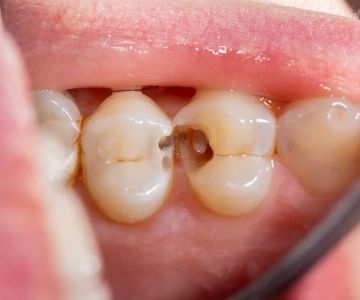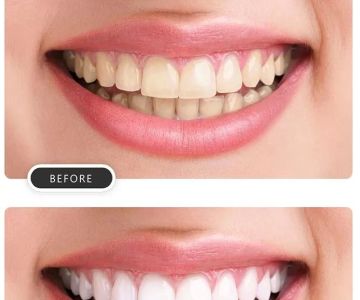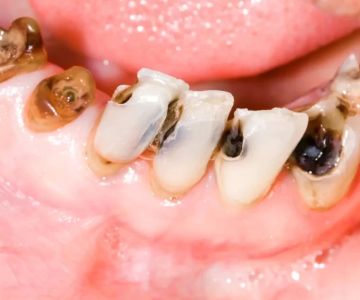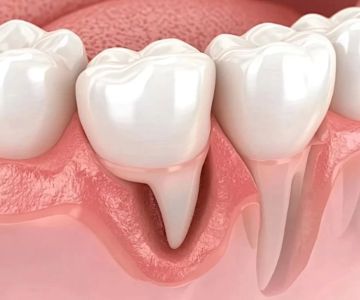The Importance of Fluoride in Dental Health
Fluoride is a remarkable natural mineral that has a significant impact on our dental health. It acts as a powerful defender against tooth diseases, making our teeth stronger and more resilient. Let's explore in detail how fluoride works its magic to keep our smiles healthy.
How Fluoride Prevents Tooth Decay
Tooth decay occurs when the balance between the loss and gain of minerals in the enamel is disrupted. Bacteria, plaque, and sugars in the mouth produce acids that attack the enamel, leading to demineralization. However, fluoride helps tip the scales in our favor. It promotes remineralization, strengthening the enamel and making it more resistant to acid attacks. This not only reverses early decay but also slows down the progression of cavities.
Fluoride Sources and Applications
Fluoride can be found naturally in many foods and water. We can also access it through fluoride toothpaste and mouthwash. Dentists have additional methods of applying fluoride, such as using foam, varnish, or gel. These professional applications provide an extra boost of protection.
Fluoride Intake for Different Age Groups
Infants and children between 6 months and 16 years need the right amount of fluoride for developing teeth. The American Dental Association provides specific guidelines to ensure safe intake, especially for young children. For example, using a pea-sized amount of fluoride toothpaste and spitting it out is important. Adults can also benefit from fluoride, especially those with certain conditions that increase the risk of oral health problems.
Risks and Benefits of Fluoride
Fluoride offers numerous benefits, reducing the risk of cavities by approximately 25%. However, there are potential risks, such as fluorosis, which can cause tooth discoloration. But with proper use and supervision, the benefits far outweigh the risks.
Recommendations for Fluoride Treatments and Intake
The frequency of fluoride treatments varies depending on individual oral health needs. Many people benefit from treatments every six months. It's essential to know the amount of fluoride in your tap water and consult your dentist for personalized advice on fluoride use.
In conclusion, fluoride is a vital component in maintaining good oral health. It strengthens our teeth, prevents tooth decay, and helps us keep our smiles bright and healthy. Understanding its role and using it correctly can make a significant difference in our dental well-being. Whether it's through proper tooth brushing with fluoride toothpaste or professional fluoride applications, incorporating fluoride into our oral care routine is a smart choice for a lifetime of healthy teeth.






 Maui Whitening Orlando4.0 (32 review)
Maui Whitening Orlando4.0 (32 review) Buena Park Smile Dental Group4.0 (37 review)
Buena Park Smile Dental Group4.0 (37 review) Mortenson Family Dental4.0 (451 review)
Mortenson Family Dental4.0 (451 review) Maple Drive Dentistry4.0 (207 review)
Maple Drive Dentistry4.0 (207 review) Don Swearingen5.0 (18 review)
Don Swearingen5.0 (18 review) Puntillo & Crane Orthodontics5.0 (125 review)
Puntillo & Crane Orthodontics5.0 (125 review) The Importance of Oral Health Education During Pregnancy for a Healthy Pregnancy
The Importance of Oral Health Education During Pregnancy for a Healthy Pregnancy Best Tips for Brushing Your Teeth Properly for Healthy Gums: Essential Techniques for Oral Health
Best Tips for Brushing Your Teeth Properly for Healthy Gums: Essential Techniques for Oral Health Why Skipping Dental Checkups Can Lead to Bigger Oral Health Problems
Why Skipping Dental Checkups Can Lead to Bigger Oral Health Problems Advantages of Porcelain Dental Restorations
Advantages of Porcelain Dental Restorations How Can Diabetes Cause Tooth and Gum Problems? Preventing and Managing Oral Health Issues
How Can Diabetes Cause Tooth and Gum Problems? Preventing and Managing Oral Health Issues Healthy Habits for Promoting Good Oral Health and Hygiene: Tips for a Healthy Smile
Healthy Habits for Promoting Good Oral Health and Hygiene: Tips for a Healthy Smile